Hey everyone, welcome to Pellegrini Guitar! Being that this is my first post in the new “My Gear” category, I wanted to pick something very special. Every guitar I own has some kind of story associated with it, but I don’t think any of them can contend with this one. I’d like to tell you the story of how I acquired my 1980 Gibson Les Paul Custom from Ron “Rontrose” Heathman, former lead guitar player of cowpunk rockers, The Supersuckers. Ron performed on 1992’s “The Smoke of Hell” and 1994’s “La Mano Cornuda” before unfortunately passing away in August 2020. May he rest in peace.
Before I get into the whole story, please help me out by subscribing to the Pellegrini Guitar channel on YouTube. To begin this story, let’s go way back to the Summer of 1998. I graduated from Lindbergh High School in Renton, WA, that June and was working all Summer as a shoe salesman in Nordstroms store #1 in downtown Seattle. I had previously worked for about 2.5 years selling shoes at Sears in Southcenter Mall, and based on that experience, I was able to get a job at Nordstrom in the spring of 1998.
That was an important Summer for Nordstrom because it was when we moved from the old store #1 (now a Sephora store) to the new location attached to Pacific Place Mall. That move was a big deal for Seattle, and I remember there being live TV news crews showing us carrying boxes from the old store to the new one. I no longer live in Seattle, but I can picture all this stuff like the back of my hand. Someday I’ll have to tell the story of meeting Chris Cornell from Soundgarden at the Nordstrom valet.
I was saving up my money that Summer, working as much as possible so that I could move out of the house I had grown up in and get my own apartment. My other financial goal for that Summer was to buy a Gibson Les Paul for my 18th birthday at the end of July. Up until that point, I had always been a Fender Stratocaster guy, but my love for heavy music had grown considerably over the past few years due to my introduction to bands like Metallica, Pantera, and Tool. I knew that a Les Paul was going to be a better fit for this heavier style of music that I had gotten into.
In all honesty, I didn’t know which model of Les Paul I wanted to buy; I just knew that I wanted something better than a Studio model. I liked the look of the Customs, but I didn’t like the gold hardware, and almost every Les Paul Custom had gold hardware.
Supersuckers at Pain In The Grass
Back in the 90s, Seattle’s main rock radio station was 99.9 KISW. I’m sure it still is today, but at that time, they used to put on this free concert series at the Seattle Center, directly below the Space Needle, called Pain In The Grass. My buddies and I frequently used to drive up to Seattle for these events, and considering what an awesome music scene Seattle had in the 90s, I think it’s fair to say we saw some awesome shows.
On one particular Friday in August of 1998, my friends and I went to see The Supersuckers performing at a Pain In The Grass show. I had never seen them before, but right away what grabbed my attention was the Les Paul Custom being played by their lead guitar player. What I loved about it was the fact that this one had chrome hardware rather than the usual gold stuff that I hated. To me, the black and chrome look was so much cooler. Honestly, I don’t even remember that much about the show. I was never a big fan of the Supersuckers; I just remember seeing Ron playing that Les Paul Custom.
Searching for a Gibson Les Paul
Back in the Summer of 1998, the Internet did exist, but it wasn’t something that most of us used on a daily basis. For me, it was more of a research or study tool for school assignments. Within the next year, I would start becoming more active online, and even made the huge mistake of selling my Fender Twin 2×12 tube amplifier online, but at this time, the main place I was looking for a used Les Paul was the classified ads in the newspaper.
I remember it was Saturday morning, the day after The Supersuckers show. I was taking a break in the back room at Nordstrom, searching the classified ads for a Les Paul. There was an ad for a 1980 Les Paul Custom – Black with Chrome hardware. I don’t remember the exact verbiage, although I do think I cut it out and saved it somewhere. Regardless, I was still thinking about the guitar from last night’s show, and this sounded just like it! I think the price was $1,800, which was within my budget, and I loved the fact that it was a 1980 model because that’s the year I was born.
Immediately I called the phone number, and a woman picked up. I told her I saw the classifieds ad and was really interested. She said the owner had a show that night in Portland but that he would be back tomorrow if I wanted to come check it out. I told her I’d be there tomorrow, and I was!
A buddy of mine gave me a lift up to Seattle, and Ron greeted us at the door. It didn’t take long to make the connection that the guy showing me a Les Paul Custom for sale was the same guy I had seen performing with The Supersuckers a couple of nights previously. I confirmed with him that this guitar for sale was the same one he was playing that night, and at that point, I knew it was the one.
I played it for a little while in Ron’s living room, and I remember him complimenting me on my rendition of Cream’s “Sunshine Of Your Love.” I’m pretty sure I wrote a check for the guitar, and Ron had to leave to deposit it, so for a little while, my friend Craig and I were just hanging out there at Ron’s house with his girlfriend. It was a fun little rockstar moment.
That was my only experience meeting Ron Heathman, but it was memorable. I’ve heard stories that he was quite the party animal back in the day. I actually remember reading some really interesting stories, including Ron from a book called “Everybody Loves Our Town: An Oral History of Grunge.” If you’re a fan of the Seattle music scene, I highly recommend that book.
‘Activating’ my Les Paul Custom
When I bought the guitar from Ron, it had the stock pickups from 1980 in it. I liked the sound, but as I mentioned earlier, I was really into heavy music in those days, so I wanted to get a heavier sound out of my Les Paul. Active EMG pickups were all the rage in those days, but I couldn’t afford to get a full set, so I ended up purchasing an EMG 81 to put in the bridge.
I think I knew that they were “active” pickups, but I didn’t understand that meant you needed a 9-volt battery in the guitar to power them. I took my guitar to Mike Lull Guitarworks in Bellevue, WA, because I knew he worked on guitars for all the big Seattle bands. Unfortunately, Mike passed away a few years ago, but I remember him being so friendly and genuine.
Mike himself did the work to install the EMG 81 on my Les Paul, and he found a way to hide the battery inside the guitar’s electronics cavity. It was Mike Lull who recommended to me that when stringing my Les Paul, I go through the back of the tailpiece and over the top.
Normally a tune-o-matic bridge isn’t strung this way, but as Mike explained it when you string it the traditional way, there is a sharp angle in the string as it goes from the tailpiece to the other piece where you have the string length adjusters. Often, due to this sharp angle, the string will touch the metal on that part of the bridge, which isn’t ideal for your tone or tuning stability.
By going around the back and over the bridge, you drastically reduce the sharpness of that angle, meaning the string no longer comes in contact with any unwanted parts of the bridge. It made sense to me, and I wasn’t going to argue with a guitar legend like Mike Lull, so I stuck with it. It grew on me quickly, too, because resting my hand on the bridge was easier with it strung this way. I’m sure there are plenty of people who will disagree with stringing a tune-o-matic bridge this way, but it has become my preference, and I now string all of my guitars with this bridge the same way. Plus, I loved that Mike Lull introduced me to this technique!
I ended up keeping that EMG 81 as my bridge pickup for many years in that guitar. It looked a little odd paired with the stock neck pickup from 1980, but I didn’t care. I was having too much fun tearing it up on that bridge pickup. I used it through my gigging years, although honestly, the Les Paul was never my main gigging guitar. It weighs nearly 12 pounds, which is very heavy for a guitar, and at that younger age, it used to hurt my shoulders if I wore it on a strap for too long. I ended up buying a PRS McCarty a few years later, but that’s another story for another day. The Les Paul always came out for a few songs during each gig, but it was mainly my backup in those years.
Another pickup change
Eventually, my love for the EMG 81 kinda wore out. I recognized the active pickup sound for what it was, but I wanted to get back closer to the roots of the guitar. I still had the original neck pickup in there, but unfortunately, I lost the original bridge pickup. Because of this, I bought a new pickup set for the guitar. I did my research and ended up selecting a Seymour Duncan JB (Jeff Beck’s signature humbucker pickup) as the bridge pickup and a Seymour Duncan Jazz pickup for the neck position. I chose this combination after reading that it was Mr. Seymour Duncan himself’s favorite humbucker combination.
These pickups are still installed on my Les Paul to this day, and the JB in the bridge is probably my favorite bridge humbucker of any guitar in my entire collection. It sounds so clear and articulate when paired with a lot of gain. I can easily squeal any kind of pitch harmonic I like, yet it cleans up nicely when I roll down the volume knob.
At this point, my Les Paul Custom, just like myself, is 42 years old. Guitars are considered “vintage” once they are 20 years old, so this one is vintage twice over and then some! I know changing the pickups affects its value, but I don’t care. I never bought it as an investment and plan to keep it forever, so its dollar value doesn’t matter to me. As far as possessions go, this is my most prized one. It doesn’t get the most playing time, but it would probably be the first guitar I grab to save if there were a fire in my house.
I hope you enjoyed my story about acquiring this guitar. Here are some photos, as well as a demo video of me playing it. Thanks again!
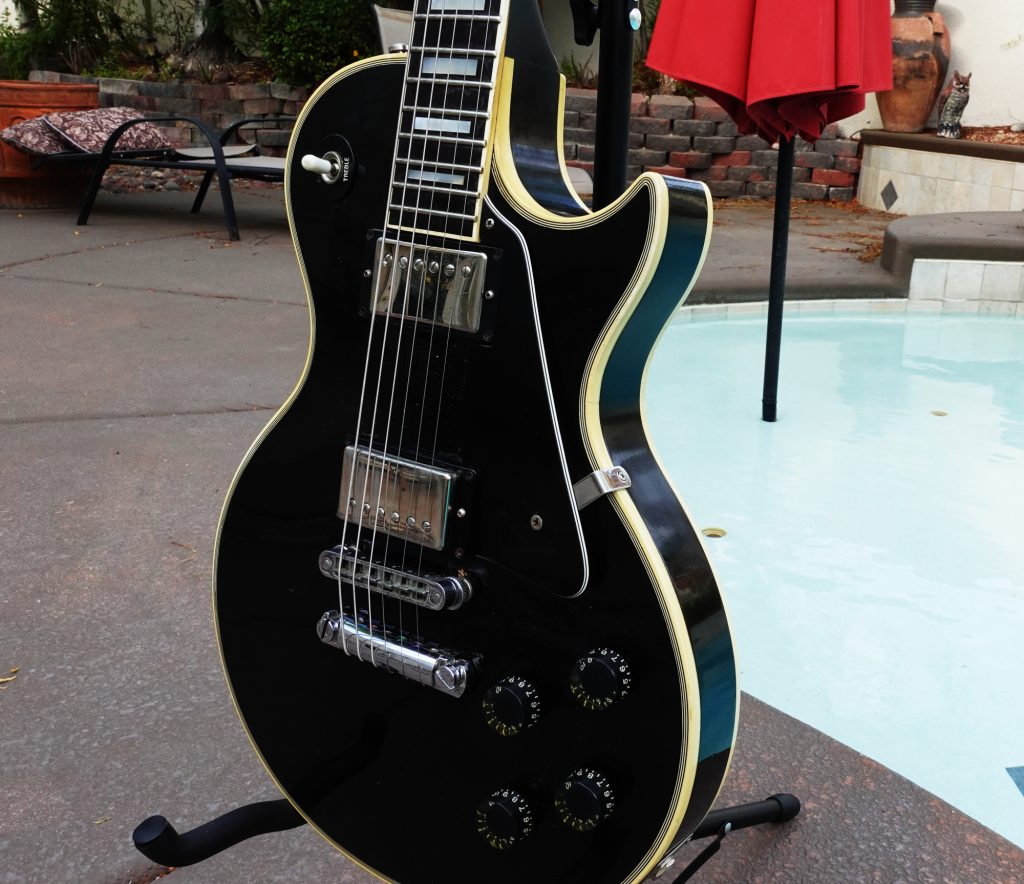
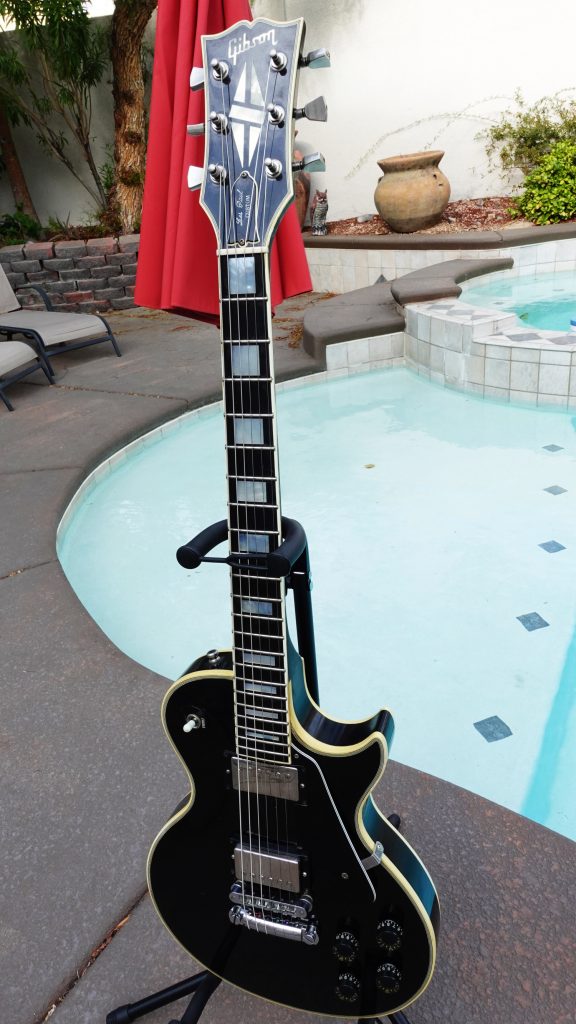
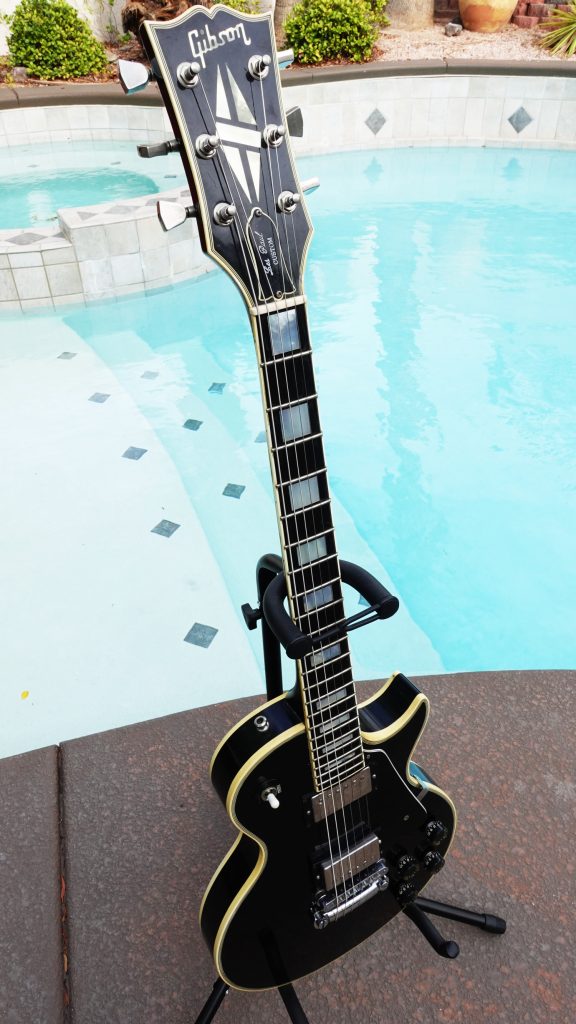
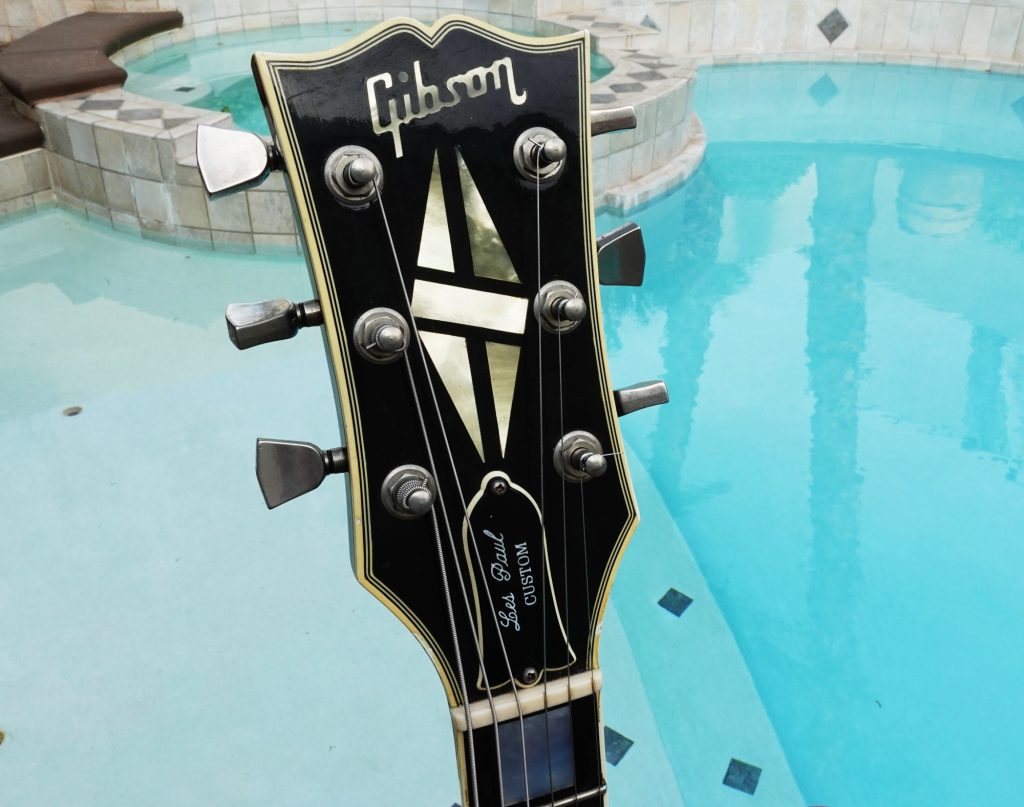


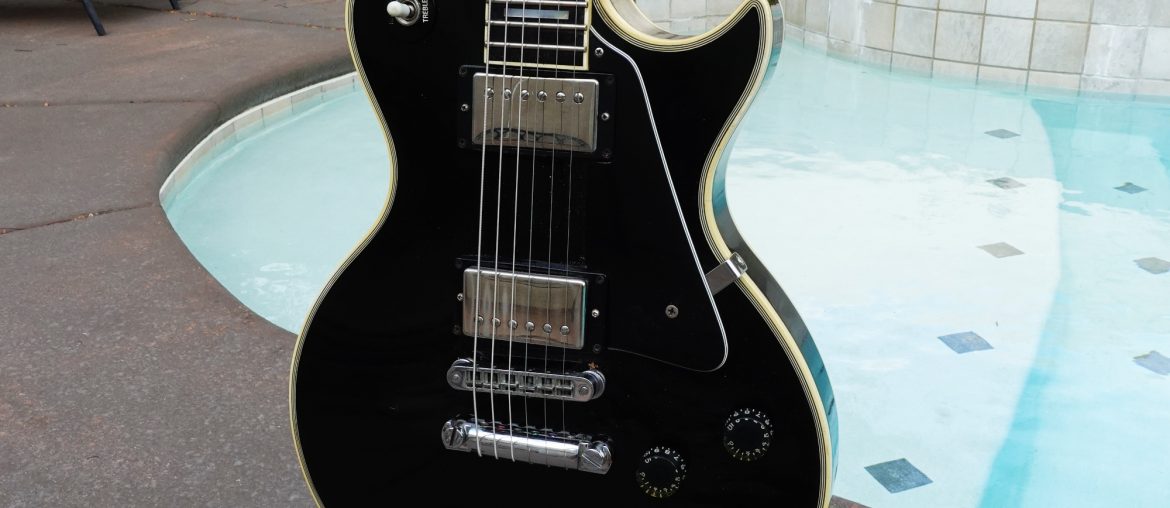
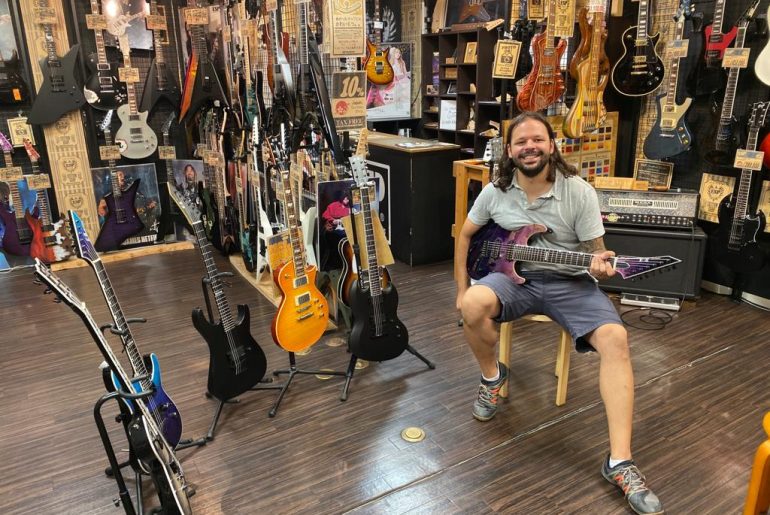
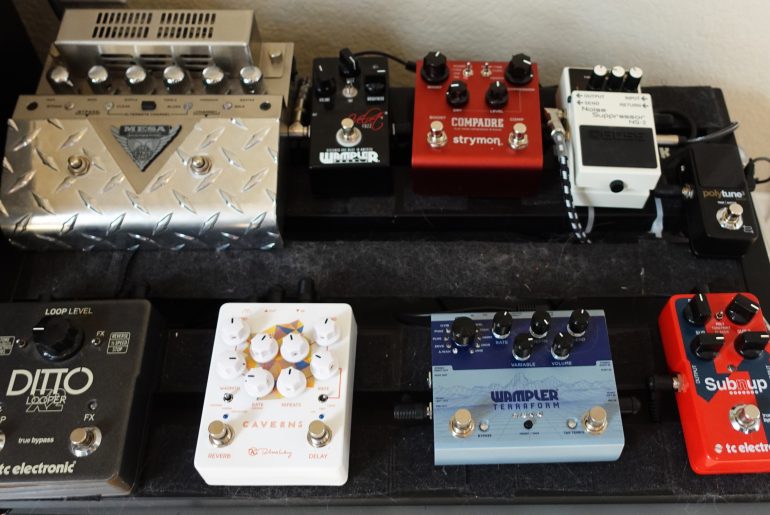
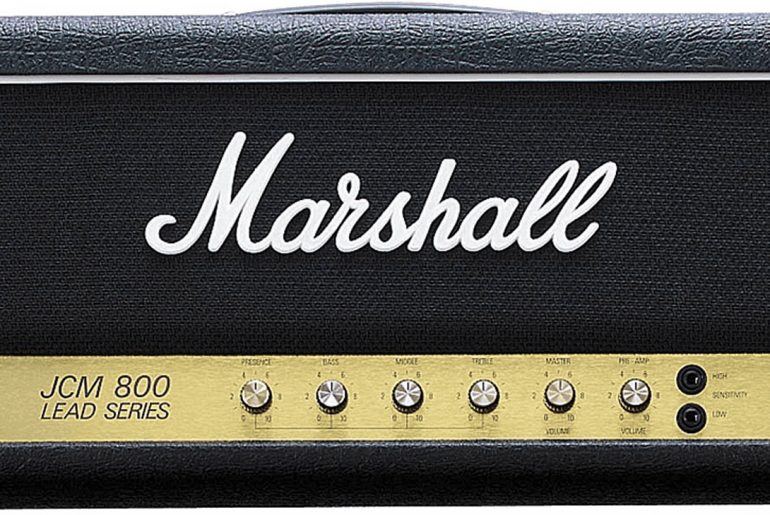
2 Comments
Pingback: The Best Guitar Amps I No Longer Own - Pellegrini Guitar
Pingback: Shopping at the ESP Guitar Workshop in Tokyo - Pellegrini Guitar